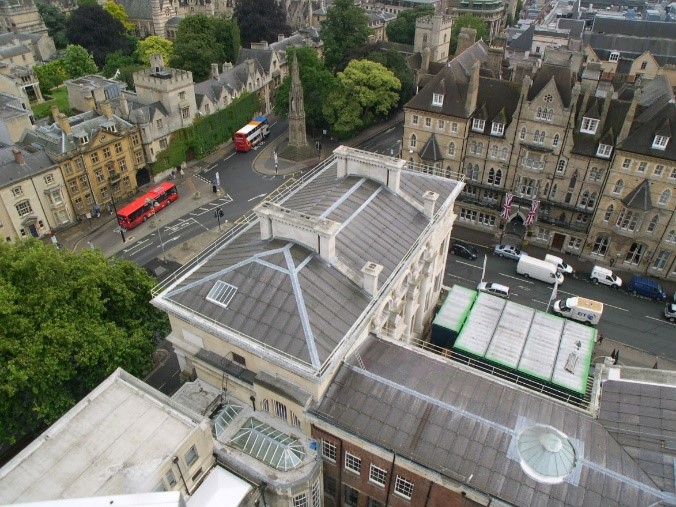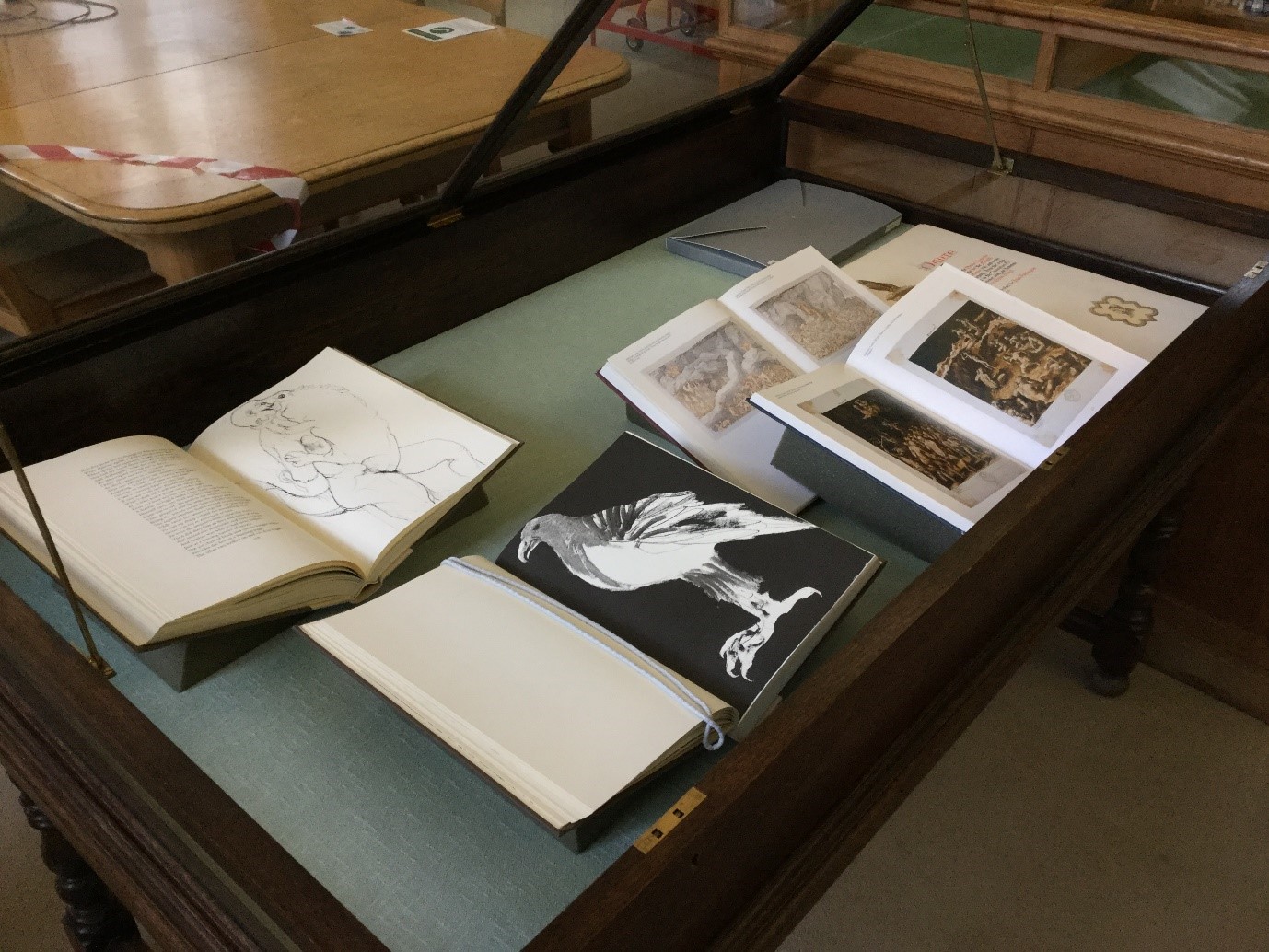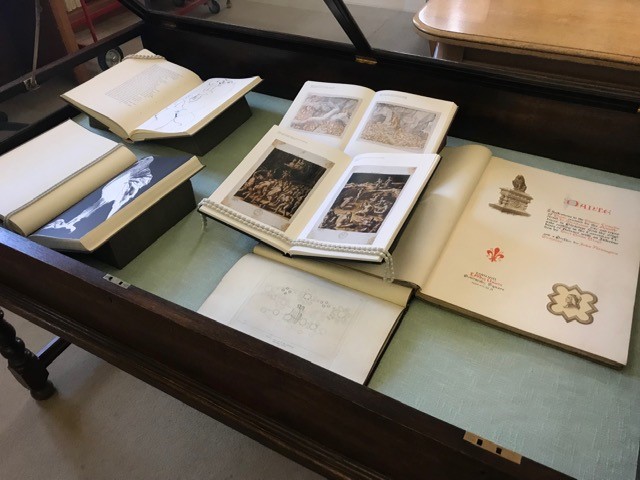
This post originally appeared on the Oxford Libraries Graduate Trainee Blog and is republished with permission of the author.
*****
Sadly, for many of us, the last eighteen months have seen the cancellation, curtailment and delay of countless celebrations, including birthdays, holidays, anniversaries and achievements. At the very least, we’ve been forced to relocate those festivities online and connect with family and friends via laptops and phone screens in a kind of digital limbo.
Re-emerging into the real world from this pandemic-induced Purgatory, I recently returned to Oxford, a city that I’d previously called home for many years. My arrival overlapped with many of the restrictions of the last year and a half being (cautiously) rolled back. As the new Graduate Trainee at the Taylor Institution Library (known colloquially as the ‘Taylorian’), my first week saw the steady disappearance of one-way systems, sign-in slots and restricted access for readers to many of the library’s more intimate spaces.

Like the Bodleian Libraries more broadly, many institutions and historical personages have also found their usual cycles of anniversaries and commemorations disrupted by lockdown measures and restrictions on large gatherings. Excitingly, the prospect of more freedom for staff and readers at the University of Oxford has coincided with another cause for celebration: the 700th anniversary of the death of Dante Alighieri (1265–1321), the great Italian poet and philosopher. As a result, the Taylor Institution Library, Weston Library and the Ashmolean Museum have prepared three exhibitions of works from among the libraries’ and museum’s many and varied holdings, which provide visions of, and insights into, the author’s most famous work, the Divine Comedy (Divina Commedia). Works from the Taylorian’s collections are included in the Ashmolean and Weston displays. The Taylorian exhibition, ‘Illustrating Dante’s Divine Comedy’, meanwhile, also draws upon the collections of the Sackler Library, Oxford’s principal research location for the study of visual culture. Alongside my regular duties at the library (with which I’m slowly familiarising myself), I’ve been fortunate enough to join Clare Hills-Nova (Librarian in Charge, Sackler Library, and Subject Librarian for Italian Literature and Language at the Taylorian) and Professor Gervase Rosser, curatorial lead on all three Oxford Dante exhibitions, in their preparations for the display of prints, manuscripts and illustrated books spanning the seven hundred years since Dante’s passing.

The photos provided here offer a window on the range of texts and images that were chosen for the Taylorian exhibition and the process that went into preparing them for public display. I came into that process after Clare and Gervase had agreed on the works to be included and their gathering from the Taylorian’s rare books and manuscript holdings and other library locations was complete. The exhibition handlist includes an introduction to the works on display as well as a list of works they considered for inclusion.
Together, Clare and I spent an afternoon preparing the exhibition space – among the already impressive holdings of the library’s Voltaire Room.

A provisional placement of the exhibits according to the chronological layout agreed by Clare and Gervase gave us a sense of how the various prints, manuscripts and books would fit within the display cases.
Working with a number of old and rare editions – including some of the oldest books that I’ve had the opportunity to see first-hand during my time in Oxford – required careful handling and the use of foam rests and ‘snakes’ (long, cotton-wrapped metal ‘beads’ designed to hold open books). Clare has a background in conservation, so provided an experienced eye and guiding hand throughout the process.

After this initial test-run of the display cases, I was tasked with assisting in the preparation of a bibliography to provide visitors to the exhibition with a comprehensive list of texts on display, and those consulted during the curation process. This not only gave me an excellent opportunity to re-familiarise myself with the Bodleian Libraries’ SOLO (‘Search Oxford Libraries Online’) catalogue, but required some further detective work to collect the full details of some of the more obscure texts included in the exhibition.
Although I’m familiar with this kind of work from my time researching and writing Russian history, and searching for texts catalogued in various forms of transliterated Cyrillic, the preparations for this exhibition included consideration of works in Italian, French and German too. Exploiting the automatic citation tool provided on the SOLO also exposed the potential drawback of relying on technology alone. Each of these languages inevitably has its own bibliographic conventions for the formatting of references (authors, titles, publishing info, etc.), not all of which are captured by auto-generation of citations. Obviously, I still have plenty to learn on that front being based in one of Oxford’s key research centres for modern languages and linguistics!

The whole process also brought home how inconsistent and incomplete some of the catalogue descriptions are within the Bodleian Libraries’ older collections and more unique items. This is quite the mountain to climb for those librarians faced with such a vast (and ever expanding) number of books, journals, periodicals and other ephemera in every language under the sun.
One particular exhibit of note is shown below:

It was wonderful to find such a striking connection between the history of Imperial Russia and Dante’s life and work!
The second set of photos below provides a view of the final layout for each display case. Supporting information to be included alongside the works was still being prepared at the time of taking, but a sense of the diversity of images and lasting influence of Dante’s work on artists, writers, print-makers and publishers across the world is evident already.
Students, faculty and staff from across the University are welcome to visit the Taylorian’s exhibition during library opening hours, from the beginning of Michaelmas term through December 2021. The parallel exhibitions marking Dante’s centenary celebrations are on display for a similar period: Ashmolean Museum (17 September 2021 – 9 January 2022) and Weston Library (8 September 2021 – 14 November 2021), which will give everyone interested in the life, history and influence of Dante the opportunity to explore the wider collections of the University.
Further Oxford Dante events, ranging from concerts to film screenings, to lectures and (of course!) at least one book launch celebrating the 700th anniversary are planned for autumn 2021.
Having now had an insight into the complexities involved in preparing, curating and displaying materials from our impressive Dante collections, the chance to come face-to-face with these exhibits sounds like Paradiso itself!
If you want to know more about Dante-related holdings in Oxford, please check out the Taylorian’s earlier blog posts in this regard (linked below):
Listening to Dante: An Audio-visual Afterlife
The Image of Dante, the Divine Comedy and the Visual Arts, Part I
The Image of Dante, the Divine Comedy and the Visual Arts: Part II
Malcolm L. G. Spencer
Graduate Trainee, Taylor Institution Library







